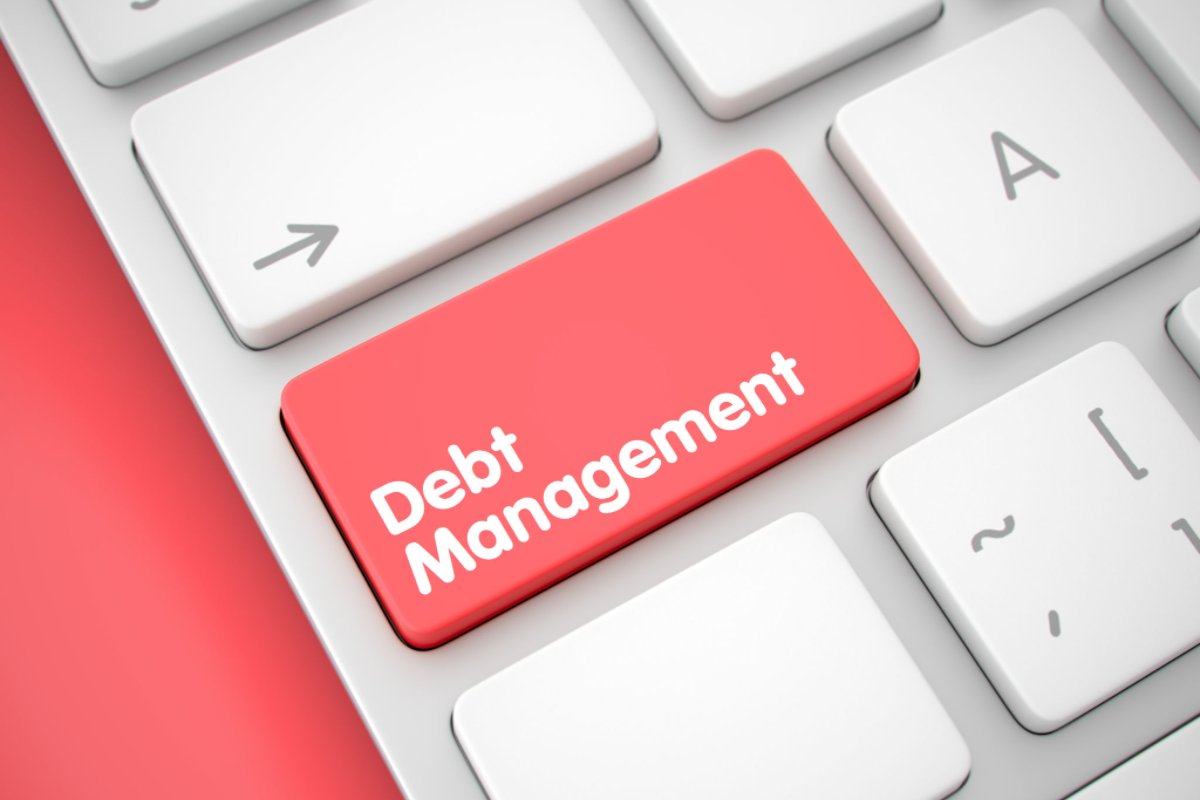Table of Contents
Dealing with debt can be an overwhelming and stressful experience, affecting various aspects of your life, from your financial well-being to your mental health. However, there is hope. In this comprehensive guide, we will explore proven debt reduction methods that can genuinely help you regain control of your finances and pave the way toward a debt-free future.
Understanding Debt Reduction
Defining Debt Reduction and Its Significance
Before diving into the practical strategies, let’s establish a clear understanding of what debt reduction means. Essentially, it involves taking steps to systematically pay down your debts while managing your financial resources wisely. The goal is not just to eliminate debt but also to achieve long-term financial stability.
Understanding the significance of debt reduction can motivate individuals to take control of their financial futures. By reducing debt, individuals can free up financial resources for other life goals, such as buying a home, saving for retirement, or funding their children’s education.
Different Approaches: Which One Suits You Best?
Debt reduction is not a one-size-fits-all solution. There are various approaches, and the right one for you depends on your unique financial situation and goals. We’ll explore two primary methods: the Debt Snowball Method and the Debt Avalanche Method, as well as how you can customize your approach.
Assessing Your Debt Situation

Taking Stock of Your Current Financial State
The first step on your journey to debt reduction is to assess your current financial situation. This involves listing all your debts, including credit cards, loans, and any other outstanding balances. Gather information about interest rates, minimum payments, and due dates to gain a complete overview.
Assessing your debt situation provides a clear snapshot of where you stand financially. It helps you understand the scale of your debt and prioritize which debts to tackle first.
Creating a Comprehensive Debt Inventory
With your debt information collected, it’s time to create a comprehensive debt inventory. This document will serve as your roadmap throughout your debt reduction journey, helping you track your progress and stay organized.
Creating a comprehensive debt inventory is crucial for managing multiple debts efficiently. It allows you to see all your debts in one place, making it easier to prioritize and manage them effectively.
Creating a Debt Repayment Plan

Building Your Debt Reduction Blueprint
Now that you have a clear picture of your debts, it’s time to create a debt repayment plan. This plan should outline your financial goals, including the specific debts you want to tackle first and a timeline for achieving your objectives. Remember, your goals should be SMART: Specific, Measurable, Achievable, Relevant, and Time-bound.
Building a debt reduction blueprint ensures that you have a clear path forward. It helps you set realistic goals and create a roadmap for how you will achieve them.
Setting SMART Goals for Successful Debt Reduction
SMART goals are crucial in debt reduction. We’ll discuss how to set goals that keep you motivated and on track, whether you aim to pay off a certain debt within a year or become entirely debt-free in a few years.
Setting SMART goals provides clarity and focus to your debt reduction efforts. It allows you to measure your progress and celebrate milestones along the way.
Strategies for Effective Debt Reduction

Now, let’s delve into the heart of the matter – effective debt reduction strategies.
The Debt Snowball Method: Pros, Cons, and Success Stories
The Debt Snowball Method focuses on paying off your smallest debts first, regardless of interest rates. This method provides quick wins and a psychological boost that can keep you motivated on your debt reduction journey. We’ll also share success stories from individuals who have successfully used this approach.
The Debt Snowball Method can be an excellent choice for individuals who thrive on visible progress and quick victories. It provides a sense of accomplishment early in the debt reduction process, which can motivate you to continue.
The Debt Avalanche Method: Maximizing Savings and Success
The Debt Avalanche Method, on the other hand, targets debts with the highest interest rates first. While it may take longer to see significant progress, this approach minimizes overall interest payments, saving you money in the long run. We’ll provide examples and tips on how to implement this strategy effectively.
The Debt Avalanche Method can be the most financially efficient approach to debt reduction. It minimizes the total interest paid, which can save you a substantial amount over time.
Combining Debt Reduction Strategies for Optimal Results
In many cases, combining elements of both the Debt Snowball and Debt Avalanche methods can yield optimal results. We’ll explore how to customize your approach, taking the best of both worlds to create a personalized debt reduction plan.
Combining debt reduction strategies allows you to benefit from quick wins while also minimizing interest costs. It offers a balanced approach that can suit many financial situations.
Cutting Expenses to Accelerate Debt Payoff

One effective way to expedite debt reduction is by cutting unnecessary expenses. We’ll provide practical tips on identifying areas where you can trim your budget and redirect those funds toward debt repayment.
Cutting expenses can be a powerful way to free up extra money for debt repayment. Small changes in your spending habits can have a significant impact on your debt reduction progress.
Boosting Your Income for Debt Freedom
In addition to cutting expenses, consider increasing your income. Exploring side hustles, freelance work, or asking for a raise at your current job can provide extra cash to accelerate your debt payoff. We’ll offer creative ideas for boosting your income.
Increasing your income can significantly speed up your debt reduction journey. It provides you with more resources to put toward paying off your debts.
Negotiating with Creditors in Debt Reduction
Negotiating with your creditors is a valuable skill in your debt reduction arsenal. Whether it’s securing lower interest rates or arranging a settlement, effective debt negotiations can save you money and expedite your journey to debt freedom.
Negotiating with creditors is a proactive approach to debt reduction. It can lead to reduced interest rates, lower monthly payments, and more manageable debt repayment terms.
Debt Consolidation Options

If managing multiple debts becomes overwhelming, debt consolidation may be a viable option. We’ll explain debt consolidation loans, balance transfer credit cards, and debt management programs, helping you decide which path is right for you.
Debt consolidation can simplify your debt repayment by combining multiple debts into a single, manageable payment. It can also potentially lower your interest rates, making it easier to pay off your debts.
Building Financial Stability with Debt Reduction
To ensure long-term financial freedom, it’s essential to build a strong financial foundation. Start by establishing an emergency fund to cover unexpected expenses, and adopt smart savings strategies to secure your future.
Building financial stability is not just about paying off debt; it’s also about preparing for future financial challenges. An emergency fund and smart savings habits can provide you with a financial safety net.
Monitoring Your Progress
Tracking your progress is essential to staying motivated and on course. We’ll discuss tracking tools and apps designed to help you monitor your debt reduction success and celebrate milestones along the way.
Monitoring your progress allows you to see how far you’ve come and keeps you focused on your ultimate goal of debt freedom. It’s a vital part of the debt reduction process.
Staying Committed and Motivated in Debt Reduction
Debt reduction can be a long and challenging journey. We’ll share strategies for staying committed and motivated, including how to overcome debt fatigue and where to find support and accountability.
Staying committed and motivated is key to successfully completing your debt reduction plan. It’s important to stay focused and remind yourself of the benefits of being debt-free.
Avoiding Common Pitfalls in Debt Reduction

We’ll highlight common pitfalls that can derail your debt reduction efforts and provide guidance on how to avoid them. Recognizing and addressing new debt traps and relapses is crucial to staying focused on your goal.
Avoiding common pitfalls can help you stay on track and avoid setbacks in your debt reduction journey. It’s important to be aware of potential challenges and how to overcome them.
Real-Life Success Stories in Debt Reduction
Sometimes, the best motivation comes from real-life success stories. We’ll share inspirational tales of individuals who achieved debt freedom through debt reduction methods. You’ll discover key takeaways and insights from their journeys.
Real-life success stories can inspire and motivate you to continue on your debt reduction journey. They show that it’s possible to overcome significant debt and achieve financial freedom.
Conclusion: Embracing Effective Debt Reduction
In conclusion, embracing effective debt reduction methods can transform your financial life. By understanding the various strategies, setting clear goals, and staying committed, you can embark on a path to financial liberation. Your first steps toward a debt-free future start today.


